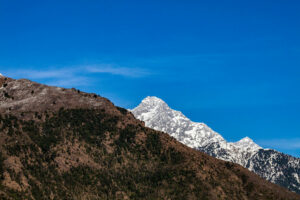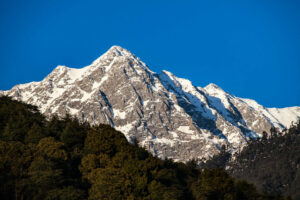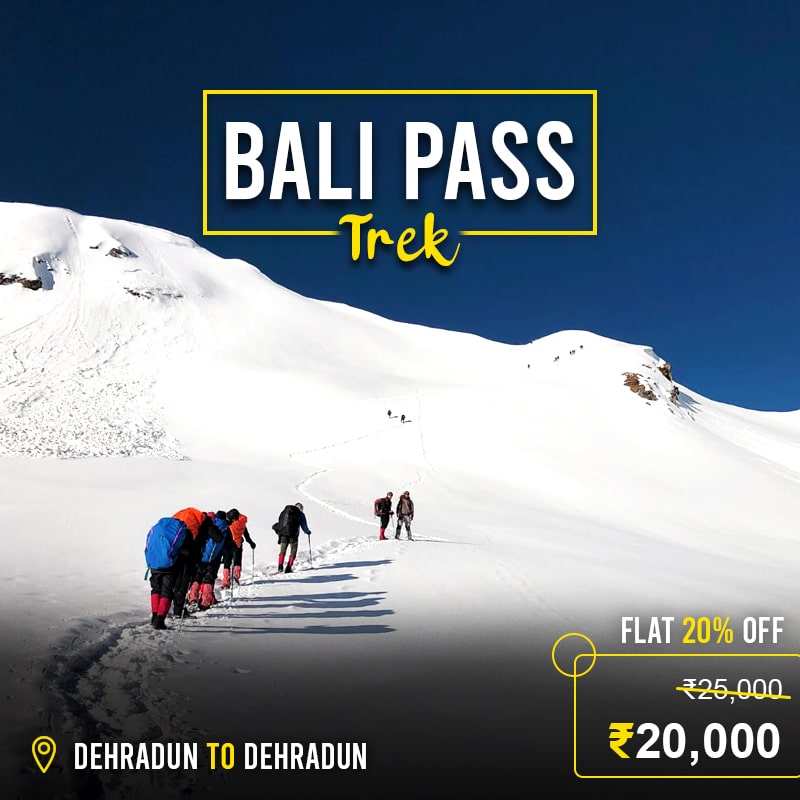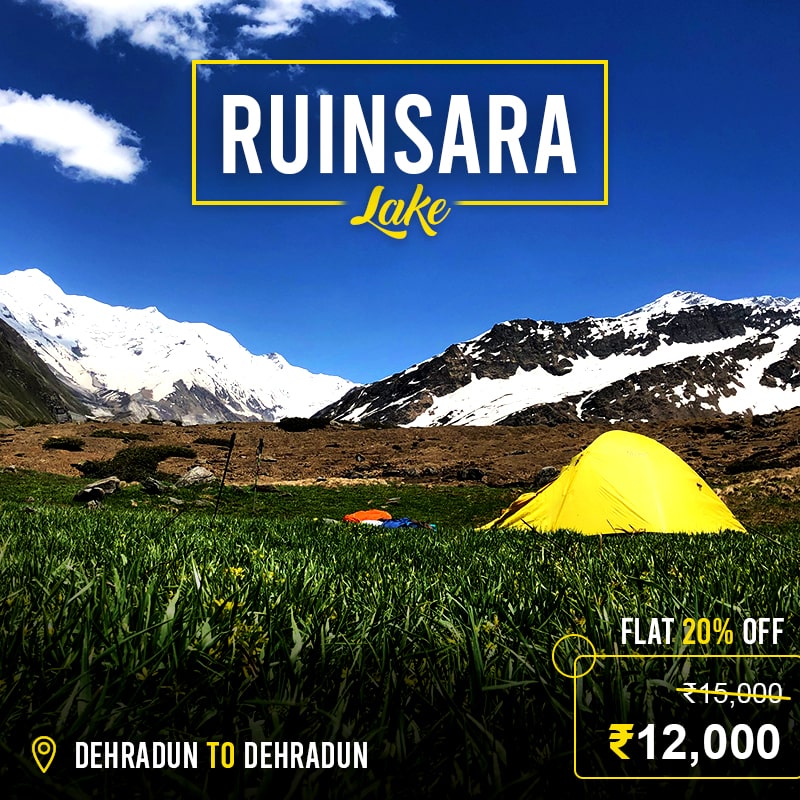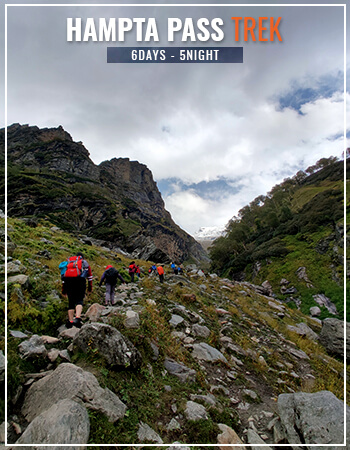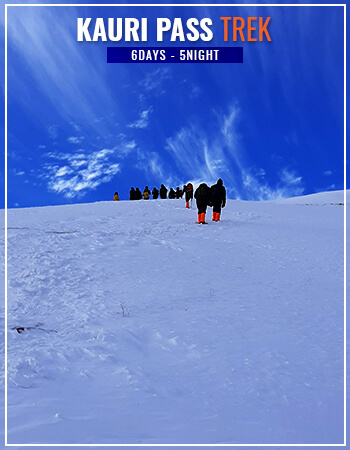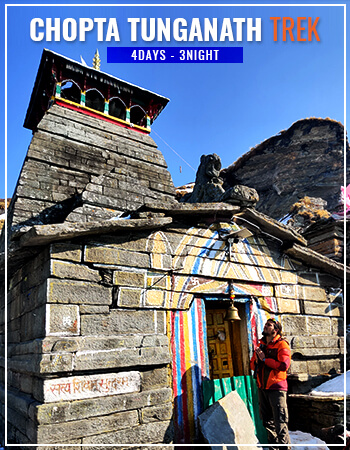HANUMAN TIBBA EXPEDITION
9 Days - 8 Night
9 Days - 8 Night
19,462 ft.
Difficult
Pir Panjal Range
ABOUT
HANUMAN TIBBA EXPEDITION
In the Pir Panjal Range near Manali, Mt. Hanuman Tibba, at 5932 metres, is one of the most thrilling Himalayan peaks to summit. The trail to this pyramid-shaped peak passes through Solang Valley’s majestic alpine meadows, Beas Kund’s glaciers and rivers, and finally the formidable Tentu Pass, providing breathtaking and varied scenery along the trek. This expedition is for those who want to reach their boundaries and go beyond daily trekking, but only those with previous trekking experience, as the Hanuman Tibba expedition is no small feat, requiring technical climbing and a high degree of fitness to complete.
SHORT ITINERARY
-
DAY 1
Manali Arrival
-
DAY 2
From Manali towards Dhundi to Bakkarthatch
-
DAY 3
From Bakkar Thach towards Beas Kund Glacier
-
DAY 4
From Base Camp towards Advanced Camp
-
DAY 5
From Advanced Camp to the Camp 1
-
DAY 6
From Camp 1 to the Summit Camp
-
DAY 7
From Summit Attempt to the Camp 1
-
DAY 8
From Camp 1 to the Base Camp
-
DAY 9
From Base camp towards Manali
DETAILed ITINERARY
Day 1: Manali Arrival
The squad will arrive in Manali by 11 a.m. today. The day is crucial not just because we’ll be able to acclimate, but also because we’ll need to gather as a team to obtain some expedition permits. Despite the fact that Mt. Hanuman Tibba is identified as a trekking peak by IMF, the current procedure developed by IMF in the Manali area requires the team to include an intimation as well as copies of all participants’ and guide’s ID proofs. For trekking in the upper Himalayan stretches, the IMF has established a regional office in Manali. We’ll require two more licenses, one from BRO and the other from SDM, once we receive this intimation from the IMF regional office.
Day 2: From Manali towards Dhundi to Bakkarthatch
Today, we leave early in the morning in a car for Dhundi, arriving at 8 a.m. Today, mules will transport our common luggage and rations to Bakkarthatch, where we will set up base camp. Today’s hike is relatively straightforward, with a gradual incline. In Dhundi, we pass across 3-4 fixed camps where “sailanis” should be visible during the year. The trail begins on the real left bank of the Beas River, which runs parallel to the trail during the day. We soon come to a wooden bridge with no “railings.” If you have a fear of water, this bridge maybe a little scary for you. We continue walking along the lush green path on the real right bank of the Beas River from here.
Day 3: From Bakkar Thach towards Beas Kund Glacier
We’ll resume climbing the Beas Kund Glacier after breakfast. A 300m long moraine field is reached after a short yet steep climb. A vast flatland with small boulders and streams will greet you, surrounded by massive mountain faces and hanging glaciers. We’ll set up camp at the base of Tentu Pass, a few kilometers from Beas Kund.
Day 4: From Base Camp towards Advanced Camp
Today, we’ll take the ferry to the Advanced Base Camp, which is just below the Tentu Pass, where the rest of the team will practice ice climbing on the glacier. We’ll spend the night here.
Day 5: From Advanced Camp to the Camp 1
We’ll trek up a steep slope of frozen snow today and arrive at camp 1, halfway up the mountainside, in time for our packed lunch. From now on, we’ll be sleeping in the snow. We make our way to the top of Tentu Pass, which is very steep and difficult. If and when ropes are needed, we will have to repair them. The view from the top of the pass is breathtaking, with mountains in both directions.
Day 6: From Camp 1 to the Summit Camp
Today’s hike is a long and difficult one that takes us over a continuous glacier while avoiding crevasses. We’ll set up camp at Summit Camp and prepare for the summit attempt the next day.
Day 7: From Summit Attempt to the Camp 1
We’ll try the summit after a hot cup of tea after midnight. The tops of the Dhauladar, Pir Panjal, and Greater Himalayan Ranges can all be seen from the summit. We’ll make our way back to camp 1 after the summit attempt.
Day 8: From Camp 1 to the Base Camp
We’ll load up Camp 1 and go down to Base Camp today. Tents can be used for the night.
Day 9: From Base camp towards Manali
We will trek back to Dhundi today, where our vehicles will meet you and transport you to Manali. Today is the last day with us.
subscribe Now
DETAILed ITINERARY
Day 1: Manali Arrival
The squad will arrive in Manali by 11 a.m. today. The day is crucial not just because we'll be able to acclimate, but also because we'll need to gather as a team to obtain some expedition permits. Despite the fact that Mt. Hanuman Tibba is identified as a trekking peak by IMF, the current procedure developed by IMF in the Manali area requires the team to include an intimation as well as copies of all participants' and guide's ID proofs. For trekking in the upper Himalayan stretches, the IMF has established a regional office in Manali. We'll require two more licences, one from BRO and the other from SDM, once we receive this intimation from the IMF regional office.
Day 2: From Manali towards Dhundi to Bakkarthatch
Today, we leave early in the morning in a car for Dhundi, arriving at 8 a.m. Today, mules will transport our common luggage and rations to Bakkarthatch, where we will set up base camp. Today's hike is relatively straightforward, with a gradual incline. In Dhundi, we pass across 3-4 fixed camps where “sailanis” should be visible during the year. The trail begins on the real left bank of the Beas River, which runs parallel the trail during the day. We soon come to a wooden bridge with no “railings.” If you have a fear of water, this bridge may be a little scary for you. We continue walking along the lush green path on the real right bank of the Beas River from here.
Day 3: From Bakkar Thach towards Beas Kund Glacier
We'll resume climbing the Beas Kund Glacier after breakfast. A 300m long moraine field is reached after a short yet steep climb. A vast flatland with small boulders and streams will greet you, surrounded by massive mountain faces and hanging glaciers. We'll set up camp at the base of Tentu Pass, a few kilometres from Beas Kund.
Day 4: From Base Camp towards Advanced Camp
Today, we'll take the ferry to the Advanced Base Camp, which is just below the Tentu Pass, where the rest of the team will practise ice climbing on the glacier. We'll spend the night here.
Day 5: From Advanced Camp to the Camp 1
We'll trek up a steep slope of frozen snow today and arrive at camp 1, halfway up the mountainside, in time for our packed lunch. From now on, we'll be sleeping in the snow. We make our way to the top of Tentu Pass, which is very steep and difficult. If and when ropes are needed, we will have to repair them. The view from the top of the pass is breathtaking, with mountains in both directions.
Day 6: From Camp 1 to the Summit Camp
Today's hike is a long and difficult one that takes us over a continuous glacier while avoiding crevasses. We'll set up camp at Summit Camp and prepare for the summit attempt the next day.
Day 7: From Summit Attempt to the Camp 1
We'll try the summit after a hot cup of tea after midnight. The tops of the Dhauladar, Pir Panjal, and Greater Himalayan Ranges can all be seen from the summit. We'll make our way back to camp 1 after the summit attempt.
Day 8: From Camp 1 to the Base Camp
We'll load up Camp 1 and go down to Base Camp today. Tents can be used for the night.
Day 9: From Base camp towards Manali
We will trek back to Dhundi today, where our vehicles will meet you and transport you to Manali. Today is the last day with us.
subscribe Now
Get Quote
DEPATURE DATE
Call- +91-8979108941 | +91-9458118063
Call- +91-8979108941 | +91-9458118063
Call- +91-8979108941 | +91-9458118063
Call- +91-8979108941 | +91-9458118063
Call- +91-8979108941 | +91-9458118063
COST INCLUSION
-
Pick and Drop Service from mentioned location
-
Fees for the guide and the chef
-
Camping facilities' rent
-
Entrance fees to the forest
-
To transport camping gear, a porter and mule are required. Please keep in mind that personal baggage can be borne by mules and/or porters for a fee
-
From the first day's dinner until the last day's brunch, both of the meals are vegetarian
-
Throughout the walk, you'll be staying in a tent or if possible, then in a guest house
COST EXCLUSION
-
No pickup and drop point from/for your hometown
-
Personal costs include things like tips, personal medications, and conference calls, etc
-
Apart from what is mentioned above, some transportation assistance during the trek
-
Porters/mules can carry personal luggage weighing up to 12 kg per bag per person for Rs 350 per day per bag
Frequently asked question
- Footwear: The trekking boots which must be waterproof and snow proof, normal boots, floaters, and woolen socks.
- Backpack: (50 ltr), Daypack (20-30 ltr), Duffel bag.
- Clothes: Jacket and trousers that are both waterproof and breathable. Jacket (synthetic or down feather fleece), synthetic insulated trousers, poncho, sweatshirt, inner thermal (upper & lower), fleece, t-shirts, cotton trekking pants, shorts
- Season wise Clothes:
- Hand and head protection includes liner gloves, bandannas, sun hats, woollen caps, and face masks, among other things.
- Accessories: Sunglasses/goggles, anti-glare lenses, water bottle, hydra bag, and headlamp with spare bulb and extra batteries are all recommended.
- Trekking Gears: Toolkit for an emergency. Sunscreen, a toiletry pack, water purification pills, Ziploc packs, ear plugs, first-aid kit, and the necessary medications are all recommended.
- Camping Equipment: Sleeping bags of lining (extreme -5 to +5 Celsius if you have one), trekking sticks, and so on.
- Warm top/light micro fleece pullover/full sleeve T shirt – 2/3
- Water resistant/repellent trekking pants with an inner lining for added warmth- 2 High-quality windproof/water-resistant outer shell (jacket) with a proper hood
- Thick Fleece / Full-sleeve Woollen Jumper, Down Jacket with at least 600 fill capacity Innerwear with a thermal component (upper and lower)
- Woolen hat, inner fleece gloves, and outer water-resistant gloves
- 4–5 pairs of thick woollen socks and standard socks, scarf/muffler (optional)
- Waterproof Trekking/Hiking shoes with a thick heel and high ankles that are comfortable to wear. Sneakers/sport shoes are ideal for camp.
- Poncho or raincoat. A small, light-weight towel
- A hydration pack and an insulated water bottle (optional)
- Sunglasses with UV cover and the potential to cut light, as well as a cap or floppy hat to shield the strong sun off your skin (important when traversing through snow)
- Trekking pole or sturdy walking stick Lip Balm, Sunscreen Lotion
- Flashlight / torch (with extra batteries) Medications, if any special prescription is needed Toiletries for personal use
- Carry a rain cover over your luggage • Day pack/small bag that you can carry on your back all day to keep your essentials in
- Keep a few poly bags or plastic containers in your bag to place your things in if you need to in case of heavy weather.
Personal Medical Kit (MANDATORY FOR ALL)
- 10 Diamox tablets (to prevent AMS)
- Nifedipine – 5 pills Dexamethasone – one strip
- 6 tablets of Crocin (fever)
- 4 tablets of avomine (motion sickness) 4 capsules of Avil 25mg (allergies)
- 4 tablets of Combiflam (Pain killer)
- 6 tablets each of Norflox TZ and Lomofen (diarrhea) 10 tablets of Digene (acidity)
- 10 Omez/Rantadine capsules (antacids) 3 to 5 metres of crepe bandage
- 1 tiny roll of gauze 10 strips of bandage 1 small roll of cotton 10 packets of ORS
- Moov spray Betadine or other antiseptic cream (aches, & sprains)
- If you're vulnerable to knee injuries, you should wear a knee cap. Powder with antifungal properties
- Cancellation: If a trek is cancelled at the last minute due to a natural disaster or unforeseeable circumstances (such as floods, earthquakes, landslides, attack, or bandh), Discoveryhike will have a trek voucher for the full number. The voucher can be used for the same or a different trek over the next year.
- In case you wish to cancel the trek, then please be aware of these things:
- Cancellations made within 30 days of the trek's launch date will include a complete refund.
- If you cancel within 30 and 20 days before the hike, you will get a 50% refund.
- There will be no refund if you cancel less than 20 days before the trek begins.
- Please keep in mind that if you get a refund, there will be a reduction of 4% (Cancellation charges) from the overall amount you pay. In addition, if you purchased trek insurance, you would not get a refund.
- Discoveryhike assumes no responsibility for any malfunction or injury to your clothes, supplies, or other belongings while on the trek. The trek fee covers all expenses associated with the trek from start to finish.

